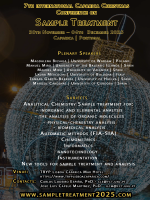Inorganic mass spectrometry-based metallomics for environmental monitoring of terrestrial ecosystems affected by metal pollution using Mus spretus as bioindicator
DOI: 10.5584/jiomics.v3i2.128
Abstract
A metallomic approach based on the use of size-exclusion chromatography coupled to inductively coupled plasma-mass spectrometry (SEC-ICP-MS) has been used to characterize the biological response in liver, brain, kidneys, lungs and plasma of the free-living mouse Mus spretus in polluted areas located in Doñana National Park (southwest Spain) and the surroundings, mainly affected by agriculture, mining and industry activities, which are responsible for the presence of metallic contaminants. It is remarkable the high presence of Cu, Zn, Cd, As, Pb and Ni in the cytosolic extracts of different organs and plasma, especially in contaminated areas. In liver extracts, high intensity peaks traced by Cu, Zn, Pb and Cd at 7 kDa (matching with metallothionein I standard) are triggered by the presence of contaminants. In kidney, similar Cu and Cd-peaks at 7 kDa were observed but the equivalent Zn-peak was depleted by the competitive interactions of Cu-Cd-Zn for the active sites of these molecules. In addition, peaks traced by Cu and Zn at about 32 kDa in liver extract match with superoxide dismutase standard (Cu,Zn-SOD), which increase in accordance to contamination. An analogous behavior was observed for a Zn,Cu-peak at about 67 kDa that can be related with the bovine serum albumin standard (Cu,Zn-BSA) or other carrier protein such as transferrin (Cu-Tf) present in liver and plasma. Finally, low molecular mass arsenic metabolites were detected in mice captured in MAT site affected by mine waste.









